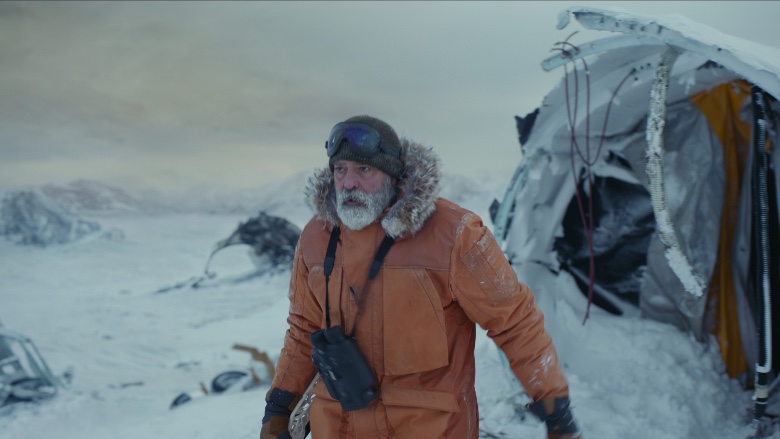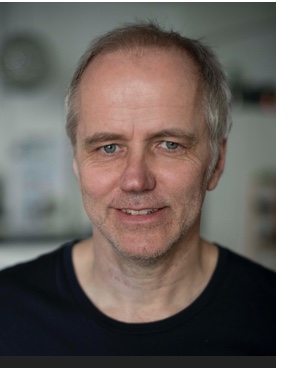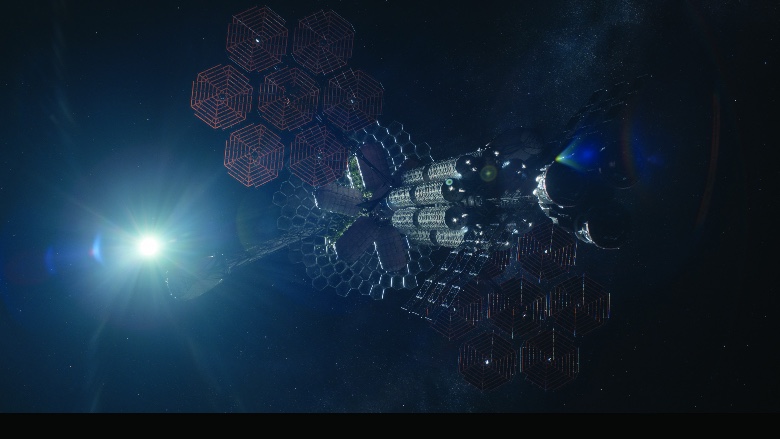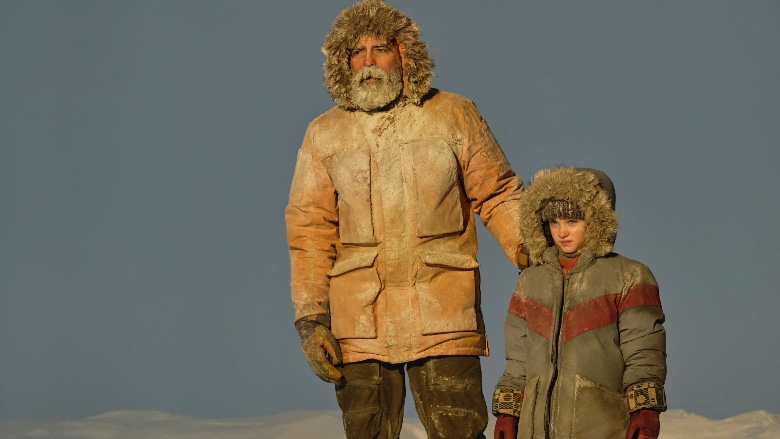
The Midnight Sky isn’t the first go-round for Cinematographer Martin Ruhe, ASC, to work with Oscar-winning filmmaker George Clooney. They previously worked together on the Hulu limited series, Catch-22, which led to a nomination by the American Society of Cinematographers (ASC) for his work on the series. Prior to that, Ruhe was Director of Photography for The American, which Clooney also starred in. When he isn’t working on films, Ruhe shoots award-winning commercials and music videos.
In The Midnight Sky, Clooney plays Augustine, a scientist on his own at an Arctic base as a team of scientists and astronauts within the spaceship Aether are heading back to earth, not realizing that a virus that has already killed much of humanity. Augustine is soon joined by a mute little girl (Caoilinn Springall), who may have some of the answers Augustine needs. Based on the 2016 novel, Good Morning, Midnight, by Lily Brooks-Dalton, the cast also includes Oscar-winner Felicity Jones, Oscar nominee Demián Bichir, Golden Globe nominee David Oyelowo, Emmy winner Kyle Chandler, and Tiffany Boone (Little Fires Everywhere).
Ruhe spoke with Below the Line over Zoom recently to discuss The Midnight Sky. During the conversation, Ruhe discussed the process of choosing which cameras to use and some of the challenges that went into making the film. While there aren’t any horror stories at the same level of The Empire Strikes Back, Ruhe opens up about shooting scenes in the bitter cold.

Below the Line: You’ve previously worked with George Clooney on Catch-22. What was it about The Midnight Sky that drew you on board for another go-around?
Martin Ruhe: I like working with George, I think he’s great filmmaker. The story is great because it’s epic. It’s big canvases and it’s a very intimate story. I like that a lot.
BTL: Can you talk about the process that went into deciding to use a large format Arri Alexa 65?
Ruhe: There’s a couple of reasons. The film was always intended to be a cinema film — we talked about maybe doing an IMAX print of it later. The 65 was close already and we then did some tests. What I loved about the 65 is that it gives you all the great detail in the big vistas in the wide shots in Iceland. Then also, it’s a very intimate format for shooting faces, and we have a lot of talking heads. I just loved how intimate that looked and felt. After we talked about The Midnight Sky, George was open to do a test and we just loved how the 65 worked on faces.
BTL: Iceland made for some astonishing visuals on screen. What was the most beautiful scenery to shoot?
Ruhe: What we shot in Iceland was amazing. It was bitter cold. I think one of the most impressive things we saw, apart from ice caves and stuff, was when Augustine and Iris dig a hole and you see the snow blowing around them on the ground. I just love that image—so beautiful and shockingly cold.
BTL: I’ve read about the horror stories that came with shooting the scenes on Hoth in The Empire Strikes Back. Were there any with shooting The Midnight Sky outside in less than pleasant conditions?
Ruhe: No, there were no horror stories. We were prepared, but it was dangerous and was very cold. One time, we had to stop shooting, because we couldn’t see George’s eyes — he had icicles basically on his eyebrows, and we couldn’t see him anymore. We had to stop and de-ice his face a little bit to make it possible to see him again. That was one of those things. It was very tough for everybody, but for the actors, they were not protected. Their faces were open so that was really tough, especially also for Caoilinn, who was seven years old when we shot it.

BTL: What were the challenges that came with shooting on board the Aether?
Ruhe: Of course zero gravity was one of the challenges. That’s always interesting to do, because it’s been done so many times – it’s been done so great by a lot of people. Zero gravity is one of the challenges. The other challenge is that a lot of this spaceship interiors were pretty small places and to work in there with a big camera and the crew was challenging because it was really tight. We used a lot of the 65 in there. We use a lot of LED lighting to have space to shoot 360 degrees in there.
BTL: When it came to lighting, were there any films that you looked at for inspiration?
Ruhe: Well, we looked at some of the older films. We didn’t want the spaceship to be too clean. We shot 65 Digital, but we added some film grain later. We chose lenses, which were detuned so they were not technically perfect. They were not like the Hasselblad version of the 65mm lenses we shot with the DNA lenses from ARRI. We detuned them a little bit, so they give them more character.
We looked at a lot of things but then we tried to make up our own things. We didn’t need to reference Gravity, because George knew what it took them to get there, because he’s been in it. That was out of our reach anyway. We didn’t want to copy that, and we didn’t want to be trying to overtake that. We wanted to create our own visuals.
One thing we realized is in outer space, we wanted our camera always to be weightless — it’s always drifting, it’s always moving once we go into weightlessness. Once we are in the spacewalk, there’s no up or down — it’s always floating. That’s why people are hanging upside down. That’s why the camera never settles. That’s why even when they put Maya down in the airlock, it’s always shifting perspective.

BTL: If the right project comes around, would you like to work with Clooney again?
Ruhe: Always.
BTL: The film’s launch on Netflix comes at the end of what has otherwise been a terrible year. How have you managed to keep yourself busy, and are there any projects that you’re looking forward to working on?
Ruhe: Well, I’ve been very lucky to be honest, because I’ve been involved with this project. We finished shooting at the end of February. After that, I went into three months break, which was nice, because I hadn’t done that for a while. I shot some commercials in between. That’s what I do to pass time between some projects. I also was involved in post-production on this — I did the grading. I went a couple of times to London to look at the CGI shots and helped with that. We had conference calls on how to do certain CGI things, how the lighting would work best, and all of that. I was fairly busy this year.
BTL: What are the challenges in having to do post during a pandemic?
Ruhe: It takes time to get together. We looked at a lot of things on iPads and on a film like that—I don’t know how you saw it, but it looks so good on a big screen. We only started seeing some of the visual effects on big screens in September, which is actually quite late. You discover that certain things maybe it should be different. Or when we saw it on a big screen, somebody discovered — oh, that was a radio mic, which we didn’t see before. That was one of the challenges. Also, it was a challenge that Company 3 did the grading with me. We did that in a remote session, so that’s always interesting. I was in a cinema at Company 3 in London while Stefan Sonnenfeld was in LA. We had Zoom calls while we were looking both at the same screen.
The Midnight Sky is now streaming on Netflix.
All photos courtesy Netflix, except where noted.





